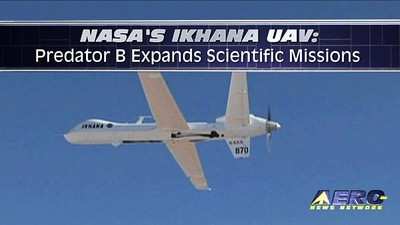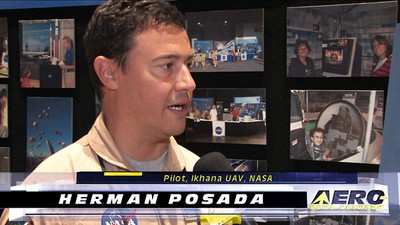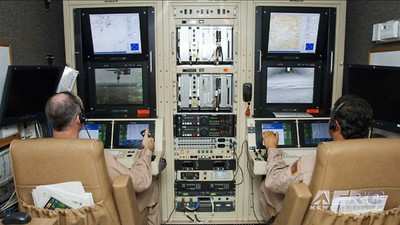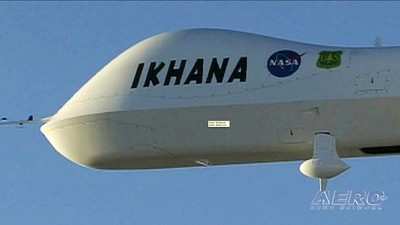Tue, Mar 16, 2010
NASA's Ikhana unmanned science and technology development
aircraft is a Predator B unmanned aerial system. It was acquired by
NASA's Dryden Flight Re-search Center to support Earth science
missions and advanced aeronautical technology development.

The aircraft, named Ikhana, acts as a testbed to develop
capabilities and technologies to improve the utility of unmanned
aerial systems. NASA obtained the aircraft from the manufacturer,
General Atomics Aeronautical Systems, in November 2006. Ikhana is a
Native American Choctaw word meaning intelligence, conscious or
aware. The name is descriptive of the research goals NASA has
established for the aircraft and its re-lated systems.

The aircraft, designed for long-endurance, high-altitude flight,
has been modified and instrumented for use in multiple civil
research roles. NASA's Suborbital Science Program within the
Science Mission Directorate is Ikhana's primary customer, using the
aircraft for Earth science studies. A variety of atmospheric and
remote sensing instruments, including duplicates of those sensors
on orbiting satellites, can be installed to collect data during
flights lasting up to 30 hours. The Suborbital Science Program uses
both manned and unmanned aircraft to collect data within the
Earth's atmosphere, complementing measurements of the same
phenomenon taken from space and those taken on the Earth's
surface.

NASA's Aeronautics Research Mission Directorate will also use
the aircraft for advanced aircraft systems research and technology
development. Initial experiments will look into the use of fiber
optics for wing shape sensing and control and structural loads
measurements. NASA's Ikhana unmanned science aircraft ground
control station includes consoles for two pilots and positions for
scientists and engineers along the side.

NASA's Ikhana/Predator B has a wingspan of 66 feet and is 36
feet long. More than 400 pounds of sensors can be carried
internally and over 2,000 pounds in external under-wing pods.
Ikhana is powered by a Honeywell TPE 331-10T turbine engine and is
capable of reaching altitudes above 40,000 feet. The Ikhana is the
first production Predator B equipped with a digital electronic
engine controller developed by Honeywell and GA-ASI that made
Ikhana five to 10 percent more fuel efficient than earlier versions
of the aircraft.
More News
Also: B-29 Superfortress Reunion, FAA Wants Controllers, Spirit Airlines Pulls Back, Gogo Galileo Van's Aircraft posted a short video recapping the goings-on around their reorganiz>[...]
Light Gun A handheld directional light signaling device which emits a brilliant narrow beam of white, green, or red light as selected by the tower controller. The color and type of>[...]
"The journey to this achievement started nearly a decade ago when a freshly commissioned Gentry, driven by a fascination with new technologies and a desire to contribute significan>[...]
"Our driven and innovative team of military and civilian Airmen delivers combat power daily, ensuring our nation is ready today and tomorrow." Source: General Duke Richardson, AFMC>[...]
Aircraft Conflict Predicted conflict, within EDST of two aircraft, or between aircraft and airspace. A Red alert is used for conflicts when the predicted minimum separation is 5 na>[...]
 Airborne 04.16.24: RV Update, Affordable Flying Expo, Diamond Lil
Airborne 04.16.24: RV Update, Affordable Flying Expo, Diamond Lil ANN's Daily Aero-Term (04.20.24): Light Gun
ANN's Daily Aero-Term (04.20.24): Light Gun Aero-News: Quote of the Day (04.20.24)
Aero-News: Quote of the Day (04.20.24) Aero-News: Quote of the Day (04.21.24)
Aero-News: Quote of the Day (04.21.24) ANN's Daily Aero-Term (04.21.24): Aircraft Conflict
ANN's Daily Aero-Term (04.21.24): Aircraft Conflict






